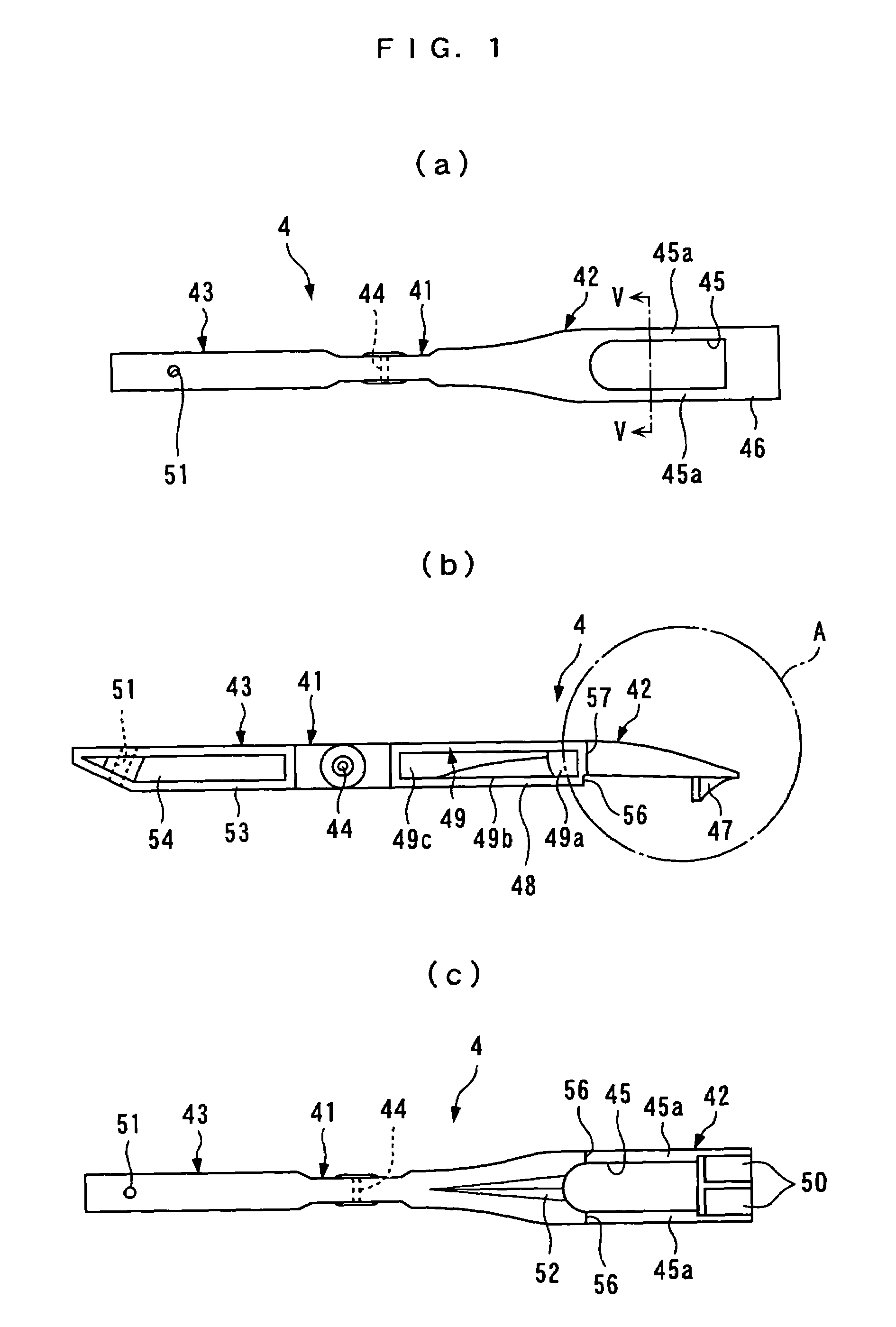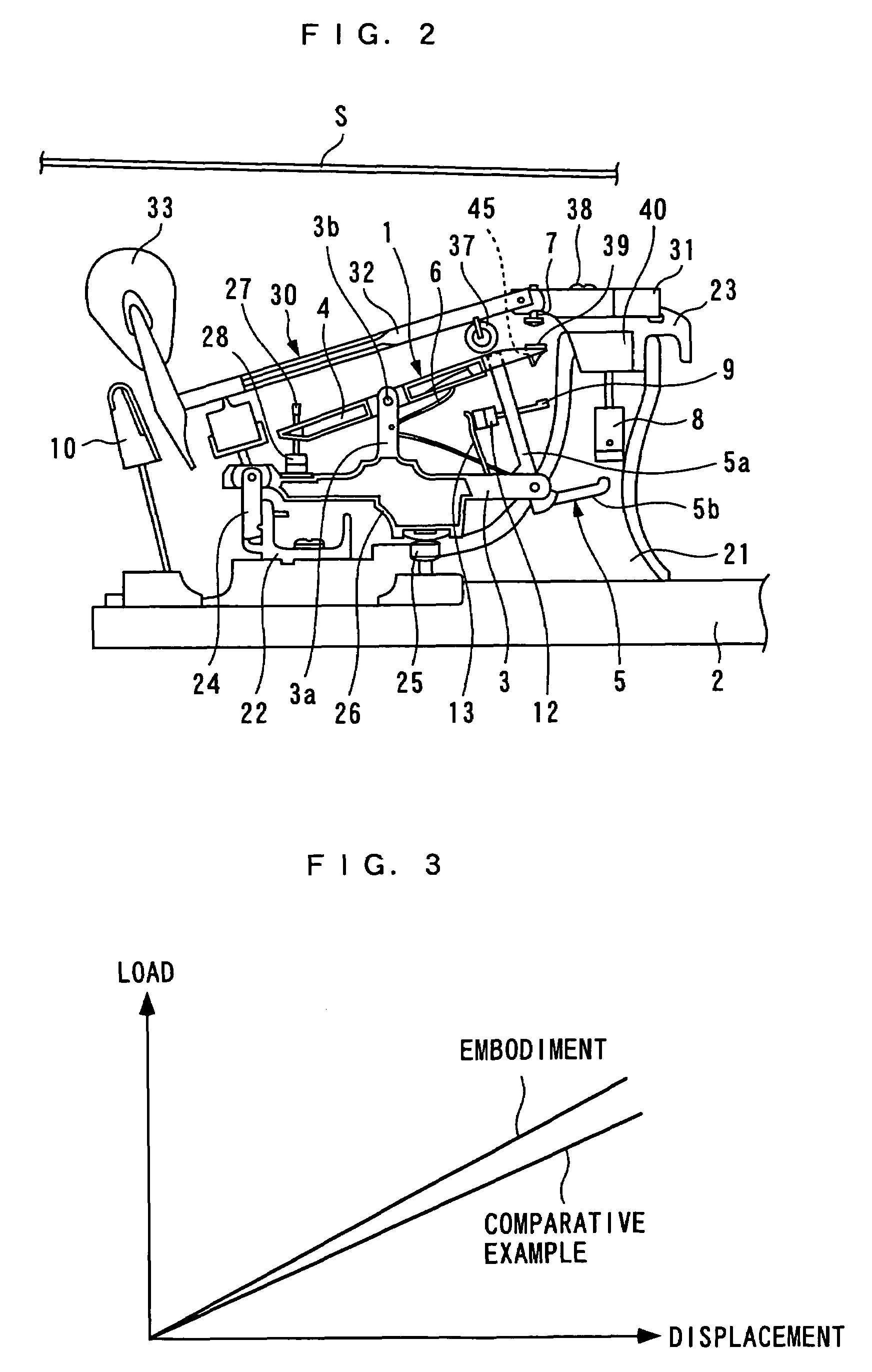Repetition lever of grand piano
a repetition lever and grand piano technology, applied in the field of repetition levers for grand pianos, can solve the problems of large dimensional change, prone to deformation, large rigidity and weight of wood, etc., and achieve the effects of enhancing the lightness of the repetition lever, reducing the cross-sectional area portion, and reducing the weight of the repetition lever
- Summary
- Abstract
- Description
- Claims
- Application Information
AI Technical Summary
Benefits of technology
Problems solved by technology
Method used
Image
Examples
Embodiment Construction
[0030]The invention will now be described in detail with reference to the drawings showing a preferred embodiment thereof. In the following description, a player's side of a grand piano (right side as viewed in FIG. 2) will be referred to as “front”, and a remote side from the player's side as “rear”. Further, a direction in which keys 2 are arranged is referred to as “the transverse direction”.
[0031]First, a repetition lever 4 will be described with reference to FIG. 1. In the present embodiment, the repetition lever 4 is formed by a thermoplastic resin molded component which is molded by a long fiber process. For example, the repetition lever 4 is obtained by injection molding using a pellet as described below. The pellet is formed by coating roving formed of carbon fibers oriented by application of a predetermined tensile force thereto, e.g. with an ABS resin, which is a thermoplastic resin containing a rubbery polymer, extruded from an extruder. This makes it possible to cause t...
PUM
| Property | Measurement | Unit |
|---|---|---|
| length | aaaaa | aaaaa |
| length | aaaaa | aaaaa |
| length | aaaaa | aaaaa |
Abstract
Description
Claims
Application Information
 Login to View More
Login to View More - R&D
- Intellectual Property
- Life Sciences
- Materials
- Tech Scout
- Unparalleled Data Quality
- Higher Quality Content
- 60% Fewer Hallucinations
Browse by: Latest US Patents, China's latest patents, Technical Efficacy Thesaurus, Application Domain, Technology Topic, Popular Technical Reports.
© 2025 PatSnap. All rights reserved.Legal|Privacy policy|Modern Slavery Act Transparency Statement|Sitemap|About US| Contact US: help@patsnap.com



